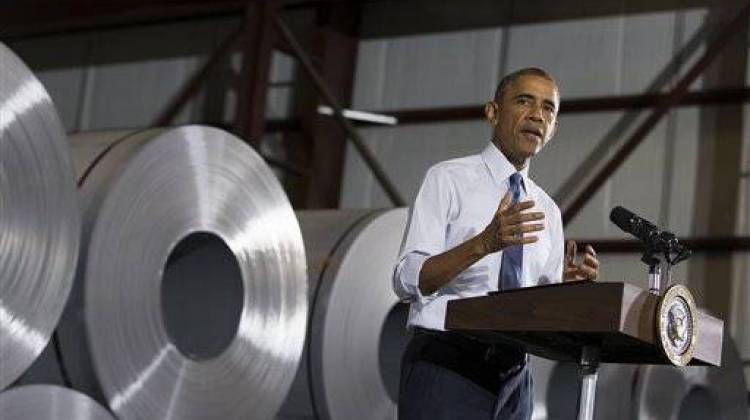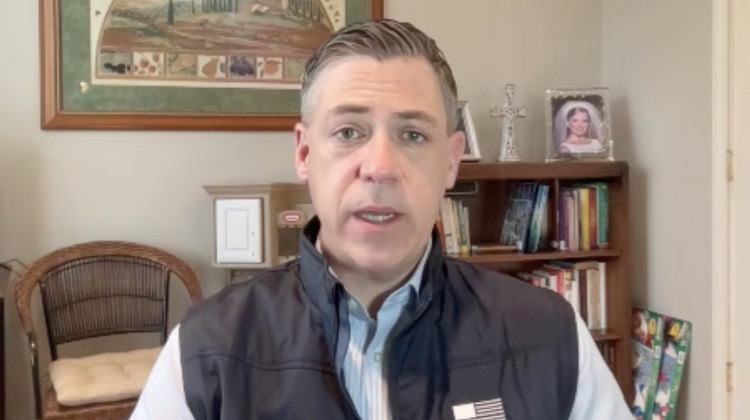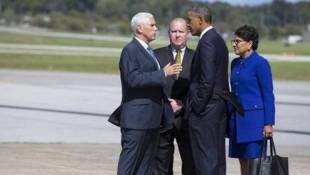
President Barack Obama speaks at Millennium Steel Service in Princeton, Ind., Friday, Oct. 3, 2014, to discuss the economy as part of Manufacturing Day.
Associated Press photoPRINCETON, Ind. (AP) — Boosted by the lowest jobless rate in six years, President Barack Obama on Friday heralded September's hiring rate as the longest uninterrupted stretch of private sector job growth in U.S. history and boasted that the country is surpassing combined job creation in other advanced economies.
The Labor Department's report Friday that employers hired 248,000 and that the jobless rate fell to 5.9 percent came as Obama was reviving his economic message ahead of the November midterm elections.
"This progress that we've been making, it's been hard, it goes in fits and starts," Obama said during a town hall at a steel manufacturing plant in Indiana. "But it is real and it is steady and it is happening."
The president's remarks were part of a new fall political campaign push to promote his pocketbook policies and to claim credit for the upturn in the economy. The visit coincided with a White House announcement for a competition to create a manufacturing innovation institute concentrated on photonics, or the use of light in technology ranging from lasers to telecommunications.
WHAT IS THE STATE OF MANUFACTURING IN THE U.S?
The U.S. economy has created 700,000 manufacturing jobs since its low point of 11.45 million jobs in February 2010. Manufacturing jobs are considered crucial because they tend to be higher paying than many of the jobs created during the recovery. Many industry advocates side with the Obama administration on issues such as overhauling immigration laws and spending more on infrastructure projects but criticize some of his environmental regulatory measures as too onerous.
The manufacturing sector is nowhere near where it was at its peak in 1979 and early 1980 when it accounted for more than 19 million jobs. Between 2000 and the beginning of 2009, the sector lost nearly 5 million jobs.
WHY THIS STEEL PLANT?
Millennium Steel Services is a minority-owned company created in 2001 as a joint venture with Toyota to supply automotive grade steel sheets to the automaker's Indiana plant and to other auto parts makers. Millennium helps Obama illustrate his case that in helping rescue General Motors and Chrysler, he also buttressed the broader auto industry and its ancillary industries. Obama planned to hold a town hall-styled question and answer session with company employees where he was sure to tout efforts by the administration to create manufacturing hubs and innovation institutes. The $200 million innovation project the president is announcing Friday is a Defense Department effort carried out in conjunction with the private sector.
WHAT'S OBAMA'S MESSAGE?
The president is promoting pocketbook issues as the campaign for congressional elections enters its final month. Obama is walking a fine line between bullish assurances that the recovery is real and acknowledgement that millions of Americans are still jobless or underemployed and not benefiting from the economic gains. In a speech Thursday at Northwestern University he said that while he is not running for re-election, the policies he has promoted will be tested on Election Day. "These policies are on the ballot, every single one of them," he said.
WHAT DO FRIDAY'S JOBS NUMBERS SHOW?
The Labor Department reported Friday morning that employers added 248,000 jobs in September, exceeding expectations. Unemployment dropped to 5.9 percent, the lowest since 2008. The report also showed that employers added 69,000 more jobs in July and August than the government had previously estimated.
The number of unemployed fell in September by 329,000 to 9.3 million. Most of them found jobs last month. But nearly 100,000 stopped looking for work, lowering the percentage of Americans working or looking for work to 62.7 percent, the lowest proportion since February 1978.
What's more, wages remained stagnant, dropping 1 cent to $24.53 an hour for all employees. And while Friday's focus was on manufacturing, which generally pays more, the job growth in that sector remained flat.
 DONATE
DONATE






 View More Programs
View More Programs


 Support WFYI. We can't do it without you.
Support WFYI. We can't do it without you.